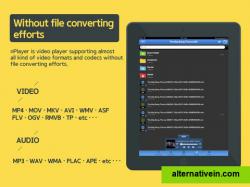

Since the protocol relies on common networking standards, UPnP does not require any additional drivers or technologies to work. UPnP enables automatic, device-to-device port forwarding via four standards: This process (known as port forwarding or port mapping) happens on the router and can permit web traffic to pass through an internal network from an external source. UPnP enables apps and devices to automatically open and close ports to connect with the LAN network. Read about the basics of network security and see how experts keep malicious actors away from valuable devices and data. This security risk is why UPnP is typically enabled only on residential setups and not small business or enterprise networks.īoth residential and business networks require protection. If the protocol permits a device with a critical vulnerability or malware to join, a skilled hacker can create a permanent entry point into the local network. While convenient, the UPnP protocol is not free of risks.

Connecting to the home surveillance system to keep an eye on the house while you are away.Linking a wireless speaker set to a mobile phone.Streaming content from a computer to a smart TV.


Some of the most common use cases for UPnP include:


 0 kommentar(er)
0 kommentar(er)
